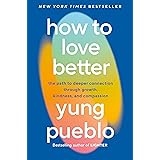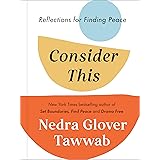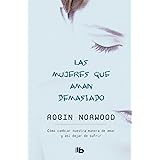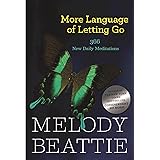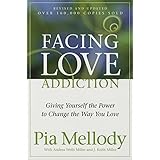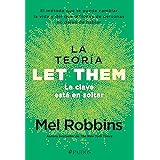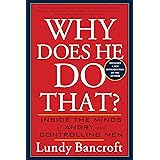The story shared in the video above, highlighting Claire’s harrowing journey to bankruptcy due to her shopping addiction, is a stark reminder of how a seemingly harmless habit can escalate into a life-altering condition. Claire’s confession of spending an astonishing £6,000 in a single spree, ultimately leading to the loss of her home and financial ruin, underscores the profound impact compulsive buying can have on an individual’s life.
For many, shopping offers a quick burst of joy, a temporary escape, or simply a way to acquire needed items. However, for an estimated 5-8% of adults, this activity transforms into a compulsive buying disorder (CBD), an addiction as real and destructive as any other. It’s not merely about accumulating possessions; it’s about the chase, the “fix,” and the elusive feeling of satisfaction that never truly lasts.
Understanding the Mechanics of Compulsive Spending
As Claire explained, her spending wasn’t always impulsive; it was often quite planned, focusing on buying multiples of items she liked. This behavior, distinct from hoarding, reveals a pattern where the act of acquiring, rather than the item itself, becomes the primary driver. The thrill of the purchase, the anticipation of possession, and the temporary dopamine rush associated with it create a powerful psychological loop.
This cycle of compulsive shopping often involves an overwhelming preoccupation with shopping, persistent urges to buy, and significant distress or impairment stemming from these behaviors. Unlike casual shopping, which serves a practical or recreational purpose, compulsive buying is driven by an internal need to alleviate negative emotions or enhance mood, often leading to guilt, shame, and further debt.
The Echoes of Childhood: Early Habits
Claire’s experience reveals a telling insight: her tendency to buy multiples started in childhood, with comics and records. This suggests that compulsive buying can stem from deeply ingrained behavioral patterns developed early in life. What might seem like an innocent collection in youth can evolve into a significant addiction later on.
These early traits highlight how certain coping mechanisms or ways of seeking satisfaction can become entrenched over time. When these behaviors are not recognized or addressed, they can grow alongside us, transforming into more complex and damaging addictions as we gain access to greater financial means and opportunities for spending.
The Emotional Void: Why We Shop
“Everything I did with regards to shopping, spending, it was all to make me feel good,” Claire reflected. This statement cuts to the core of many behavioral addictions. Compulsive buying often serves as a coping mechanism, an attempt to fill an emotional void or escape from difficult feelings like anxiety, sadness, loneliness, or low self-esteem.
The temporary high derived from a purchase acts like a psychological painkiller, providing a fleeting sense of power, validation, or excitement. However, this relief is short-lived, often replaced by regret, financial stress, and deeper negative emotions, perpetuating the cycle. The addiction specialist in the video rightly pointed out that the specific “symptom” — whether shopping, food, or substances — often serves the same underlying purpose: to change the way one feels and to fill that perceived void.
From Thrill to Ruin: The Financial Avalanche
The most visible and devastating consequence of shopping addiction is often financial ruin. Claire’s story of bankruptcy and losing her home is a stark illustration. What starts with buying “multiples” can quickly escalate to maxed-out credit cards, unpaid bills, and overwhelming debt. The pleasure of the purchase is invariably followed by the harsh reality of financial distress.
Even after experiencing significant losses, the compulsion can be incredibly difficult to break. Claire’s admission of still finding ways to spend, even if it meant a smaller spree at a budget store like Primark, demonstrates the powerful grip of the addiction. It highlights that the problem isn’t the item itself or its cost, but the inherent act of buying and the momentary relief it provides.
Recognizing the Signs: Is it More Than Just a Habit?
Distinguishing between enthusiastic shopping and a genuine spending addiction can be challenging. However, several key indicators can help identify if shopping has crossed the line into compulsive behavior. These include:
- **Preoccupation:** Constantly thinking about shopping, planning future purchases.
- **Loss of Control:** Inability to stop or reduce spending, even when faced with negative consequences.
- **Financial Distress:** Accumulating debt, neglecting bills, lying about purchases, or experiencing bankruptcy.
- **Emotional Drivers:** Shopping to escape feelings of anxiety, depression, boredom, or loneliness.
- **Secrecy and Guilt:** Hiding purchases from loved ones, feeling ashamed or guilty afterward.
- **Impact on Relationships:** Arguments with family or friends about spending habits.
- **Tolerance:** Needing to spend more money or shop more frequently to achieve the same “high.”
If these patterns sound familiar, it’s a strong signal that professional help and support may be beneficial. Recognizing these signs is the crucial first step toward recovery from compulsive buying.
Moving Towards Healing: Taking the First Steps
For those grappling with a spending addiction, the journey to recovery begins with acknowledging the problem, a step that Claire found difficult even after bankruptcy. Understanding that compulsive shopping is a legitimate addiction, often masking deeper emotional issues, is vital for healing.
One effective strategy involves identifying and addressing the underlying emotional triggers that fuel the urge to shop. This might mean exploring alternative coping mechanisms for stress or sadness, such as engaging in hobbies, exercise, mindfulness, or seeking support from friends and family. Building a robust support system and practicing financial discipline, often with professional guidance, can help regain control. Therapy, particularly cognitive-behavioral therapy (CBT), can be instrumental in identifying thought patterns that lead to compulsive buying and developing healthier responses.



